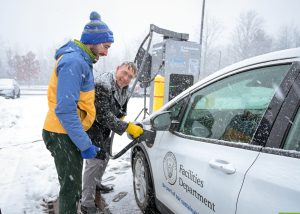ALBANY, N.Y. — SUNY Chancellor Jim Malatras on Tuesday announced that SUNY has adopted a policy mandating all students “using on-campus facilities in any capacity” to test negative for the coronavirus within the 10 days prior to leaving campus for Thanksgiving break.
Campuses must develop schedules that conduct the test as close to a student’s departure date as possible. In all, SUNY’s 64 colleges and universities will test about 140,000 students over a 10-day period preceding Thanksgiving break, SUNY said.
SUNY contends that this testing requirement will help prevent community spread as students return to their hometowns. Colleges and universities must submit a plan to test all of their on-campus students within that 10-day window no later than Nov. 5.
(Sponsored)

“They are family. They would never do that!” Our guard comes down as it is hard to imagine a family member capable of business fraud. Unfortunately, that is when the

Is Your Small Business Ready for the Unexpected?
Essential Coverage Every Family Enterprise Needs Small businesses are built on big dreams, and those dreams run even deeper when family is involved. You’ve invested your time, money, and heart
“As in-person classes and instruction come to a close next month, tens of thousands of students will travel across the state and country to be with their families and complete their fall courses remotely,” Malatras said in a statement. “By requiring all students to test negative before leaving, we are implementing a smart, sensible policy that protects students’ families and hometown communities and drastically reduces the chances of COVID-19 community spread. While we understand there is a lot of focus on plans for the spring semester, we must first finish this semester safely.”
Under previously approved, fall-semester plans, most SUNY colleges and universities are set to shift to 100 percent remote learning after Thanksgiving, with residential facilities shutting down, barring exceptions for students “with extenuating circumstances.”




